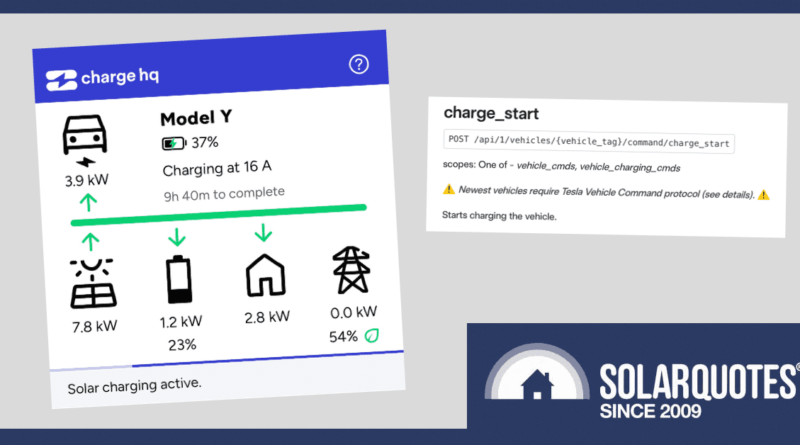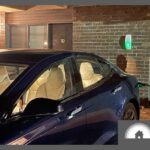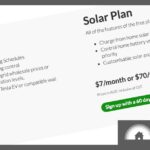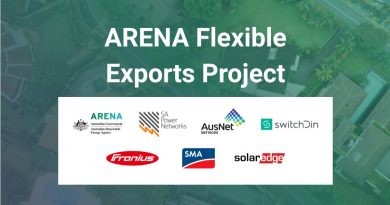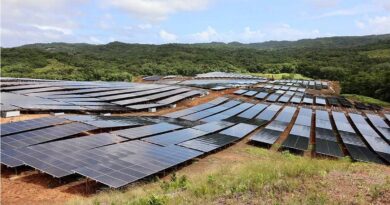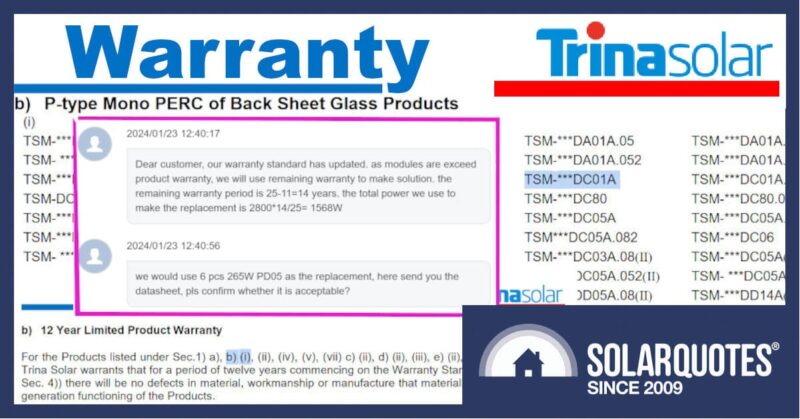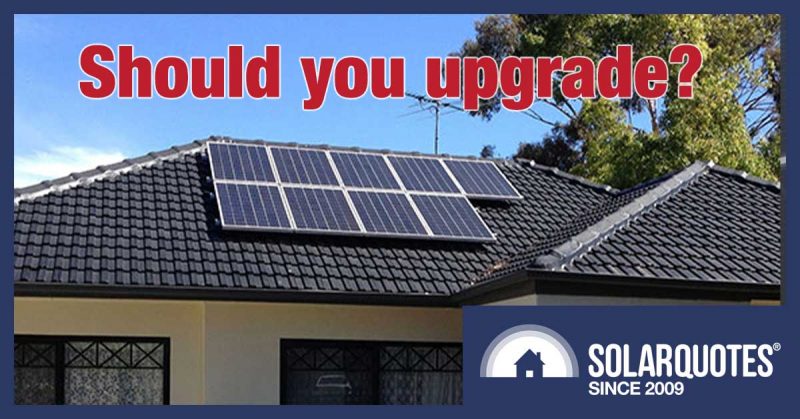Smart EV Charging Pioneer Charge HQ Hit By Perfect Storm
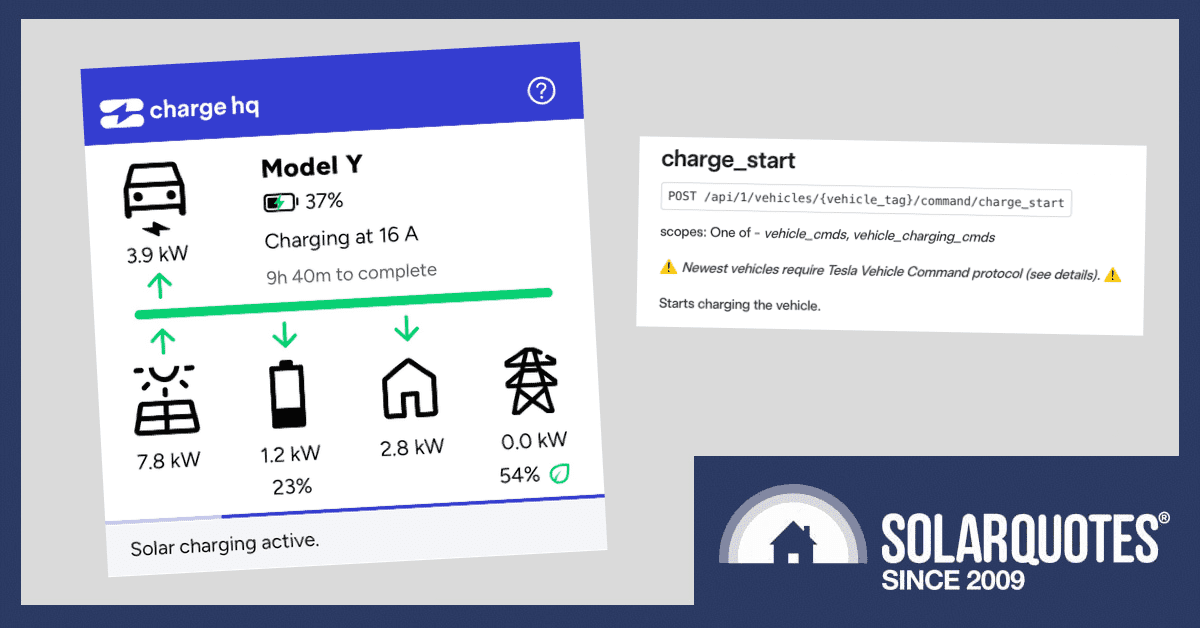
Charge HQ co-founder Andrew Rogers recently said the company faces an uncertain future. This post will explain what’s happening, why it matters, and suggest some possible ways forward.
What is Charge HQ
Charge HQ is a popular Australian app that helps you manage your EV, EV charger, home battery, and solar system using the cloud. It gives you more control over how you charge your EV, such as:
- Charging with excess solar power
- Charging mostly with solar, then topping up with a cheap overnight tariff
- Charging based on timers, excess solar, electricity price, or the percentage of renewables in the grid
This is especially useful if you have different brands in your home energy system or EV fleet that would otherwise struggle to work together for optimal EV charging.
It’s a great solution, particularly popular with Tesla owners, as Teslas can only smart charge without an app like Charge HQ if you buy the full Tesla eco-system: car, charger, and Powerwall.
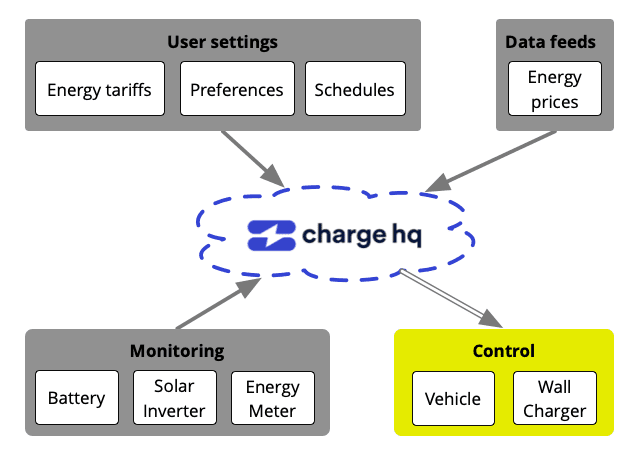
What’s Causing The Uncertainty?
Let’s unpack how this situation came about.
2021: Charge HQ founded using free Tesla API
When founded in 2021, Charge HQ was a free service that controlled non-Tesla EVs using the free, open OCPP protocol and controlled Tesla EVs using the unofficial, free Tesla API.
Teslas are unique in that their charging is controlled by talking to the car (not the wall charger) via a proprietary Tesla API.
Mid 2023: Charge HQ starts charging a subscription
In Mid 2023, Charge HQ started charging new customers a subscription to try and cover the costs of operating the company. At the time, existing Charge HQ customers were grandfathered into free, full-featured plans.
October 2023: Tesla announces end of Free API access
In October 2023, Tesla threw a spanner in the works for companies relying on their unofficial free API, saying it would be shut down by January 2024. Tesla would offer an official third-party API instead with different rate limits and eventually charge for usage.
At the same time, Australian electricity retailers such as AGL, Origin, Ovo, Powershop, Red Energy and others have been trialling electricity offers specifically targeting EV owners.
Electricity retailing innovator Amber has gone one step further. They suggest customers use Charge HQ but quite openly have also been working on developing their own in-house Amber for EVs technology to optimise EV charging.
An Uncertain Future for Charge HQ
Rogers was quite honest about the situation in various comments he made recently on the Charge HQ forums (key excerpt quotes are below):
“At the end of June 2024, all users on the early adopter plan will automatically switch to the free plan (which does not include solar charging)”.
“When the Tesla API pricing is introduced we expect that the free plan will need to be suspended for all users and that the solar plan will see a price increase or a reduction in functionality, or both“.
“Right now there’s a very small number of users with OCPP chargers so it’s a matter of believing we can grow this to make it viable if we don’t find a solution that works for Tesla users.”
“We are continuing to look for ways to allow us to keep the service running as a viable business. If we reach a point where we can’t see a way forward we will publish guides with suggested alternatives for optimising your EV charging”.
The Charge HQ Solar Plan mentioned currently costs $7/month ($84/year), and it will likely rise further.
That compares to the average saving per Charge HQ user of $125-$140 a year.
Customers Jumping Ship?
I asked several members of the Australian EV-owning community who have used Charge HQ what they would do. A selection of their answers gives a good snapshot of sentiment at present and shows many have no loyalty to the service:
Alex – “I installed Charge HQ to control my OCPP ZJBeny EVSE pretty much as soon as I had it installed in October 2023. I used the trial to get it all working then moved to the $7/month subscription after one month and still subscribe”.
“They have a difficult business model to sustain as scheduled charging is usually easily done without need of a paid subscription, while the savings with use of excess solar PV are small when you can buy power for free or with low cost tariff windows and are often not outweighed by the subscription cost”.
“I recently moved to a new EV electricity plan with 2 hours of free electricity 12-2PM every day, so it uses that, then in afternoons captures any excess solar PV (very low feed in credit of 1.4c/kWh)”.
Robert – “Yes, still using it, started when we got the car in March 22. Even though OVO plan has made us use the solar function less, we’ll be using it more now that we will move back to soaking up more solar during the day. Charge HQ has been an extremely convenient plug and play solution.”
Vincent – “I’m with OVO, and paying for Charge HQ . I love all the features and flexibility that it provides. It’ll cost me more money and time to do this myself using evcc / home assistant”.
Lisa – “As an early adopter of Charge HQ I stopped using it as the new cost far exceeds what I’d save in charging costs.”
Julian – “Quit Charge HQ. Monthly fee was too high and didn’t make economic sense. I just schedule charge 0900-1530 based on best guess solar curves.”
Luke – “I’ve recently switched to the Amber Electric beta EV solution as it’s better designed to deal with variable pricing.”
Neil – “I was using Charge HQ but the demise of the early adopter plan coincided with me getting on the Amber EV alpha option which is working very well for me.”
Gary – “I was using it, but Amber Electric offered for me to join the EV Alpha program just before the start of the month. Alpha is working well, and I can’t wait for beta.”
What are Charge HQ’s Options Going Forward?
With about 90% of their customer base using Charge HQ to smart charge Teslas, Charge HQ is in a pickle. As far as we can see, they have the following options:
- Charge enough to be profitable with Tesla’s new API charges, and hope enough Tesla owners will pay.
- Stop offering solar smart charging via the Tesla car and target EV owners who have invested in an OCPP-compatible charger. Although this is currently only 10% of their customer base, states and territories are likely to follow SA’s lead in mandating OCPP on all new home chargers, so this should be a growing market.
- Wait until the Tesla Wall Connector gets OCPP compatibility1, and use the charger to smart charge Teslas instead of the car.
- Find a business model that generates revenue without a subscription. For example, suggest EV charging plans based on the charging profile and take a finders fee from energy retailers, sponsorship, advertising, or lead generation.
- Get bought out for their underlying technology so the founders can make some financial return from all their efforts in helping early adopter Australian EV owners recharge their cars cheaply.
In the comments, let me know if you think we’ve missed any options for keeping this great Aussie App going.
Original Source: https://www.solarquotes.com.au/blog/charge-hq-perfect-storm/

